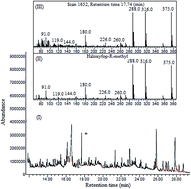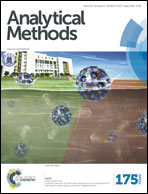Deep eutectic solvent-based dispersive liquid–liquid microextraction
Abstract
In this study, for the first time, a new kind of solvent termed deep eutectic solvents has been synthesized and used as the extraction solvent in a dispersive liquid–liquid microextraction method. Some pesticides were used as model compounds and the proposed microextraction method was applied for their extraction and preconcentration from fruit juices and vegetables prior to gas chromatography-flame ionization detection. In this method, choline chloride and 4-chlorophenol were mixed at a molar ratio of 1 : 2 and after heating a water-immiscible deep eutectic solvent was formed. The obtained new solvent was mixed with a disperser solvent (acetonitrile) and the mixture was rapidly injected into an aqueous phase containing the analytes. The obtained cloudy solution was centrifuged and 1 μL of the sedimented phase was injected into the separation system. Some important parameters like the type and volume of the extraction solvent, ionic strength and pH of the aqueous phase, and centrifuge rate and time were studied. Under the optimum conditions, enrichment factors were in the range of 312–482. The linear ranges of the calibration curves were wide and the limits of detection and quantification were in the ranges of 0.46–3.1 and 1.5–11 ng mL−1, respectively. This method was simple and rapid for sample preparation.


 Please wait while we load your content...
Please wait while we load your content...